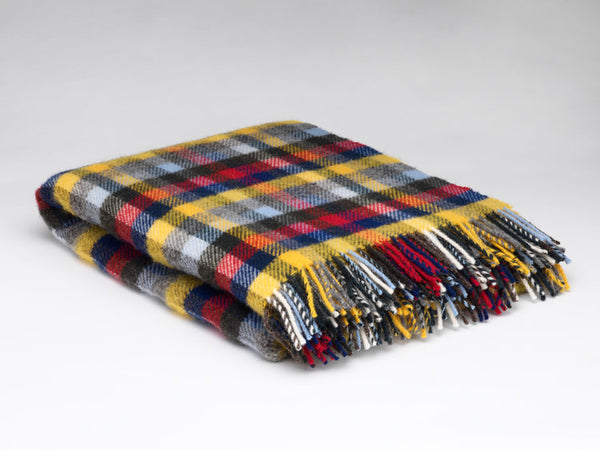
Caring for Irish wool blankets
Caring for Irish wool blankets
So, you’ve invested in a high-quality Irish wool blanket, hoping you’ve found something that will last several years, if not a lifetime. Everyone remembers his or her Granny’s knee blanket or rug that seemed to be ever-present in the back seat of the car during family outings. 
So, how did they do it? Well, wool, being a natural fibre, has a number of properties that make it remarkably resilient, providing you don’t force things and take some fairly basic measures.
Stain resistance
Unlike many synthetic fibres, wool is naturally anti-static and consequently less likely to gather dust and lint from the air or contact with other surfaces, garments etc. It also has a naturally occurring protective layer that prevents stains from being absorbed.
Natural elasticity and toughness
Wool’s natural elasticity means it will stretch (within reason;), to the wearer’s size and then, once removed, return to its original shape. This is due to wool’s crimped structure and its ability to endure being bent back on itself many thousands of times (more than 20,000 times according to some articles we’ve read). They are, therefore, extremely resistant to wrinkling; have you ever seen a saggy sheep?
Odour resistant
Granted, some wool garments and blankets have a unique and easily identifiable smell, especially when they get damp or wet; however, it is rare to find your wool blankets taking on foul smells from other sources. Take thick woollen hiking socks as an example. This is because wool is particularly effective at absorbing sweat and releasing it into the air before bacteria have had a chance to grow and release an unpleasant odour.
Don’t force it, just expose your wool to the air
Probably the most effective method of refreshing your wool is to simply hang it in the fresh air, just as nature intended. As well as being a remarkably simple solution, it saves time, energy, washing detergent and helps to reduce your impact on the environment.
Look out for moths!!!
One thing that wool definitely does not survive is contact with moths and some other bugs. A natural source of protein, wool hanging in your wardrobe or stored in the attic provides moths and silverfish with an irresistible and easy source of protein. So, take care to protect storage areas like wardrobes and attics from moths and silverfish. There are many natural and unnatural ways to protect against this kind of damage. Visit Martha’s blog for an overview of how to protect your wool from these beasts. Hope you enjoyed reading this. If you have any other tips on how to look after your wool products, please leave them in the comments below.

